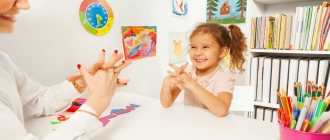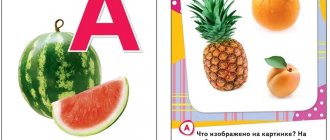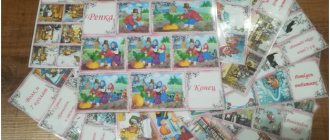Mnemonics in simple words
This name came to us from Ancient Greece. Mnemosyne is the mother of the muses and the goddess of memory. It is in her honor that most concepts related to memorization are called mnemonic.
Having looked carefully at the goddess once, you will no longer be able to forget her) She is so memorable.
And mnemonics themselves are rules, tools and methods that help us improve our memory. Mnemonics does this by: organizing information, using associations, and mentally creating images.
For example, if we need to remember meaningful information, then this is easy to do. But with dates, phone numbers, multiplication tables, and vocabulary words, it’s better to resort to mnemonics. Unless the child has a photo memory, of course)
Read this article about the development of photo memory. Download free games for developing photographic memory here (links will open in a new tab).
It is also advisable to make sure that his attention is at the proper level. You can check it here (link will open in a new tab).
So we come to the concept of mnemonics) Mnemonics is the practical implementation of a specific means of mnemonics. What we specifically do to remember.
What is the best mnemonic technique?
Mnemonics techniques do not work the same for all people. Every child and adult is unique. It seems to one that some technique is directly necessary, while to another the same technique is seen as a useless exercise.
Therefore, when offering a child, you need to select a specific technique for specific memorization. What should it be like?
Check the selected technique for the following principles:
- it must attract the child's attention,
- contain a simple association,
- this association is easy to remember,
- attracts attention.
The dumber, funnier, more absurd, more enjoyable the mnemonics are, the better. Don't use boring and old ones. In addition, they must correspond to what needs to be remembered.
This can be explained with an example. The example is taken from the Internet.
The child needs to remember that off the coast of Ecuador on the Galapagos Islands there is a huge number of unique animals, including dragon water lizards.
What method should I use to memorize?
- Ecuador has a flag and you can use it. But it will not attract attention and does not give an association with animals.
- You can imagine a dragon lizard crawling onto the island. But we need to remember the name of the island and many more unique animals.
- Dragon lizards galloping across the island. Gallop is consonant with the word Galapagos. We still need a lot of unique animals. One can imagine a herd of animals released from the reserve and galloping across the island. They are led by dragon lizards.
The third method is the most memorable and corresponds to what needs to be remembered. We choose him.
In general, the effect of using mnemonics is similar to solving complex riddles with a strange “answer”. Check it out for yourself here (link will open in a new tab).
Below are the mnemonics I liked.
Mnemonics according to the rules of the Russian language.
Which is correct? Stockings or stockings? Socks or sock? But if you remember: the longer, the shorter. Then you will always say correctly: stockings, socks .
And here's another one. How to pronounce it correctly: apples or apples?
You can learn about the secrets of correctly remembering any information for a long time (laws, etc.) here (link will open in a new tab).
The simplest mnemonic techniques for children in grades 1-4
Young children in elementary school are still developing voluntary memory. Will in this process is the main thing. When a child needs to make an effort and will to remember.
You can read more about the types of memory in the article Development of memory and attention in preschool children - the best games and exercises (opens in a new tab).
And since volitional memorization is still being formed, it is necessary to use fun and funny methods.
The easiest way is rhyme and rhythm
Here, however, it is worth warning that this method does not mean understanding the memorized information.
Rhythm. We use this method without even noticing it. We repeat information with a certain rhythm, thereby remembering it. Musicians may appreciate this method.
We also automatically create a rhyme or use an existing one. This is how you can learn the multiplication table.
- Six six is thirty six.
- Five five is twenty five.
- Six eight is forty eight.
- Six four twenty four.
My daughter and I found multiplication so interesting: 7x8=56. 5 and 6 are the two previous numbers going up to 7 and 8. That’s what we say: “7, 8, 5, 6.”
Dates and numbers
There is the most effective way to remember numbers and dates. This is a method of bringing numbers to life and creating stories with them.
But before using the method, you and your child need to use your imagination and come up with what each number looks like? The image of the same number on each specific date may be different.
You can use these tips.
Where will the regroupings lead?
Grouping is breaking down information into smaller parts or highlighting smaller parts for better remembering.
Couples
If we need to remember a long number, we can break it into pairs. For example, you need to remember the phone number: 50482793. Break it down and get: 50 48 27 93
Even just reading a long number helps children by breaking it down into familiar components.
For example, you need to read the number and remember it: 25,000,000. The child knows the ranks of numbers, that 1,000 is a thousand, and 1,000,000 is a million. Each digit has 3 digits.
We break the number from the end into three digits: 25,000,000. The total number of 2 full digits is a million. We read the number to the left of 6 zeros (million) - 25 and add millions.
In pairs and threes we reduce the amount of information that needs to be remembered and make the process easier for ourselves.
Acronyms
This is a certain type of abbreviation. They are formed from the initial letters of words and are pronounced together, not letter by letter. KGB is not an acronym.
That is, in other words, we use the initial letters of the memorized word to create other words that are understandable and easy for us.
The goal is to give words a different meaning and facilitate the memorization process. The well-known word “university” is an institution of higher education. It's an acronym.
For example, you need to remember the names of the parts of speech: verb, noun, adjective. We take the first few letters of each word and get an unexpected, almost medicinal word:
GLASUPRIL
Try it yourself.
Or you can make up a whole story from the initial letters of words. Remember how you taught your child to remember the names of the sequence of colors in the rainbow?
Every (red) Hunter (orange) Wants (yellow) to Know (green) Where (blue) Pheasant (purple) Sits.
This is also a mnemonic device.
These scary sequential associations
In fact, this is just a scary long method name)
Sequential associations are used to remember a list of words and their order. In this technique, an association is selected for each word and specific associations are remembered, not words.
For example, a cup, a bear, an airplane, a broom.
— I see a cup that a bear is trying to get into. He finally gets into it. The cup stretches and turns into an airplane that flies between the broom rods.
But! It is important not only to come up with connections between objects, you need to form a mental image, see each image in action. First imagine a cup. What is she like? What color, shape?
Then we introduce the bear. What is he like? Like in life or like in the picture? Imagine the color of your fur coat and eyes. Are the claws long? Then we connect the images.
We imagine a bear getting into a cup. You need to see it in your mind and take your time. Let the images come to life. This big bear climbs into the cup.
She is so small, but the bear is huge. First he lowers one leg, then the other. And now he is already sitting there.
The cup stretches, the spout turns into the nose of an airplane, the sides also stretch out and turn into airplane wings, then a tail appears. And now our plane is flying.
And on the way, a huge broom appeared, and our airplane maneuvers between the bars so as not to touch them and crash.
Having imagined this picture, the child will easily remember the words that he memorized.
The mere creation of visual associations by a child not only trains the ability to remember, but with the help of this tool one can remember a lot.
In addition, we connect our right hemisphere, imagination, visualization, which also develops thinking.
Scribbles?
Why kalyaki-malyaki? Because we will use graphic associations.
It is necessary to depict the memorized information graphically, using drawing tools. You write a word and artistically highlight the letter you need to remember. How to highlight graphically?
We need to remember the spelling of the word Carrot. We write Carrots. Moreover, “O” can be of enormous size. You can draw a face in the letter “O” that shows the tongue.
You can draw a car wheel, or you can draw a cucumber. Or you can simply “scribble” the letter “O” and put a blot on it. This will definitely be remembered.
This is a very creative task and the child himself will tell you what needs to be done)
Let's play with sound?
Scientifically, we use phonetic associations. I'll just give an example.
Bullfinch and snow - some kind of laughter
They don't look alike at all
But the letter e is in the word snow,
And in the bullfinch too!
Phonetic associations can be used to learn foreign words. To do this, it is necessary to select consonant associations of Russian words with foreign words and form an image.
Puddle in English is pronounced puddle. The consonant Russian word is to fall. We imagine a boy falling into a puddle. Or Peppa Pig. She loved to fall into a puddle)
Is this seat taken?
Method "Places or locations". This method is also called the Cicero method. It is the oldest and became popular half a century before the birth of Jesus Christ.
Cicero told the story of a poet who had to remember guests based on where they were sitting at a dinner party before the roof collapsed. Their bodies could not be identified. And the poet remembered them by the place where each one sat.
This experience was evidence that a person can improve memory abilities by forming mental associations with a specific place.
Using this method, it is necessary to place words or blocks of information, translated into images, in known places in the room or house. Then mentally walk through them and remember the information.
This is how Greek and Roman orators prepared their speeches, and they also used this method to conduct long discussions.
If a child needs to remember something, let’s say learn a paragraph from a textbook. What are we doing?
We allocate 5 places: kitchen, living room, bedroom, bathroom, toilet. For placement, it is necessary to divide the memorized material into blocks. If there is a retelling plan, then we divide the material according to the plan.
Next, you need to come up with your own images for each block and link them to the corresponding place in the apartment, or to a specific place in your room.
For example, you need to remember the paragraph about the forests of Russia. In the kitchen we will arrange the taiga with its coniferous forests.
We enter the kitchen, and there is a continuous green forest along the walls and it smells of pine needles, fir trees, larch trees, one of them accidentally pricked a child’s hand.
Yes, we must not forget about the animals that sit under the fir trees and on the branches of the pine trees. We place them there according to the list. Some growl, others let themselves be petted, and others simply fly to another tree.
Let's go further and place information in the living room with images. The living room will have mixed woods. Between the fir trees, pines and larches we see birch trees, etc.
After placing the images in the appropriate rooms, we need to go through our place-rooms again to remember the information.
How to learn poems dynamically?
Using the “Places” method you can learn poems and rules. For example, reading a line of a poem in one room, walking around it, connecting this line with objects in the room.
Then go to another room and recite the next line, etc. Learn each line in a specific room.
When memorizing, you don’t have to physically walk, but walk mentally, in your imagination, from one room to another.
Another option. Do not walk from room to room, but while sitting in one room, simply turn around and look from one object to another as you pronounce each line.
For example, learn a line if you memorize in the room and watch the TV. Learn the second line and look at the sofa, etc.
Or do all this in your imagination - mentally move your gaze from one object to another while memorizing the next line.
Having memorized the entire poem, leave the room, and then enter, mentally repeating what you have memorized and using the same associations.
Where should I hang the word?
Words of support or words-hangers
This technique is an improvement on the previous technique "Places". It was invented in the 18th century by Henry Herdson. It allows you to remember unrelated information.
First you need to prepare hanger words. For example, 1 is a jump, 2 is a juice, 3 is a cough, 4 is a box, 5 is legs, etc. As much as you need to remember.
Next, we hang the information that needs to be remembered on hangers. How?
It is necessary to select an association between the memorized information and words - hangers. As a result, we should get a mental image in which new information and the hanger word interact.
The image should be lively and very detailed.
For example, we need to remember the words: table, dog, tree. We present:
1 - jump. Jumping up and down table
2 - juice. A dog drinking juice from a straw
3 - cough. A tree coughing or bending over to clear its throat.
The funnier the image, the better it will be remembered.
We encrypt information
Yes, we just translate the information not into codes, but into schemes. We conveniently place the diagrams in tables and get mnemonic tables.
With the help of schematic graphic images, you can memorize various types of information: poems, rules, texts, fairy tales.
Mnemonic tables are a graphic image (drawing) - a diagram of a memorized word, action, phrase. We depict the entire poem, story or text in the form of diagrams that the child can easily remember.
What mnemonics are the best and suitable for children in grades 1-4?
A small child under 3 years old has a sponge's memory.
Absorbs everything. Then she becomes selective, subject to interest. By age 7, memory is formed, but it is still involuntary. And to study in primary school, a child needs help, the so-called mnemonics for children in grades 1 - 4. After all, you need to quickly and a lot memorize, learn poems, rules, and master the program. And not only the program. Almost all children go to additional clubs, where memory is simply necessary.
And then more. The volume of material being studied is increasing and something urgently needs to be done with memorization skills. And it is better for parents to immediately help their child learn to effectively memorize information using various special means.
In addition, using mnemonics, we “kill” several birds with one stone. We remember quickly, fun and a lot, retain information for a long time, develop memory and completely control the memorization process.
And most importantly, we train attention and thinking. These are the tools I want to share with you.
The content of the article:
Mnemonics in simple words
The simplest mnemonic techniques for children in grades 1-4
- The easiest way is rhyme and rhythm
- Where will the regroupings lead?
- These scary sequential associations
- Scribbles?
- Let's play with sound?
- Is this seat taken?
- How to learn poems dynamically?
- Where should I hang the word?
- We encrypt information
What is the best mnemonic technique?







